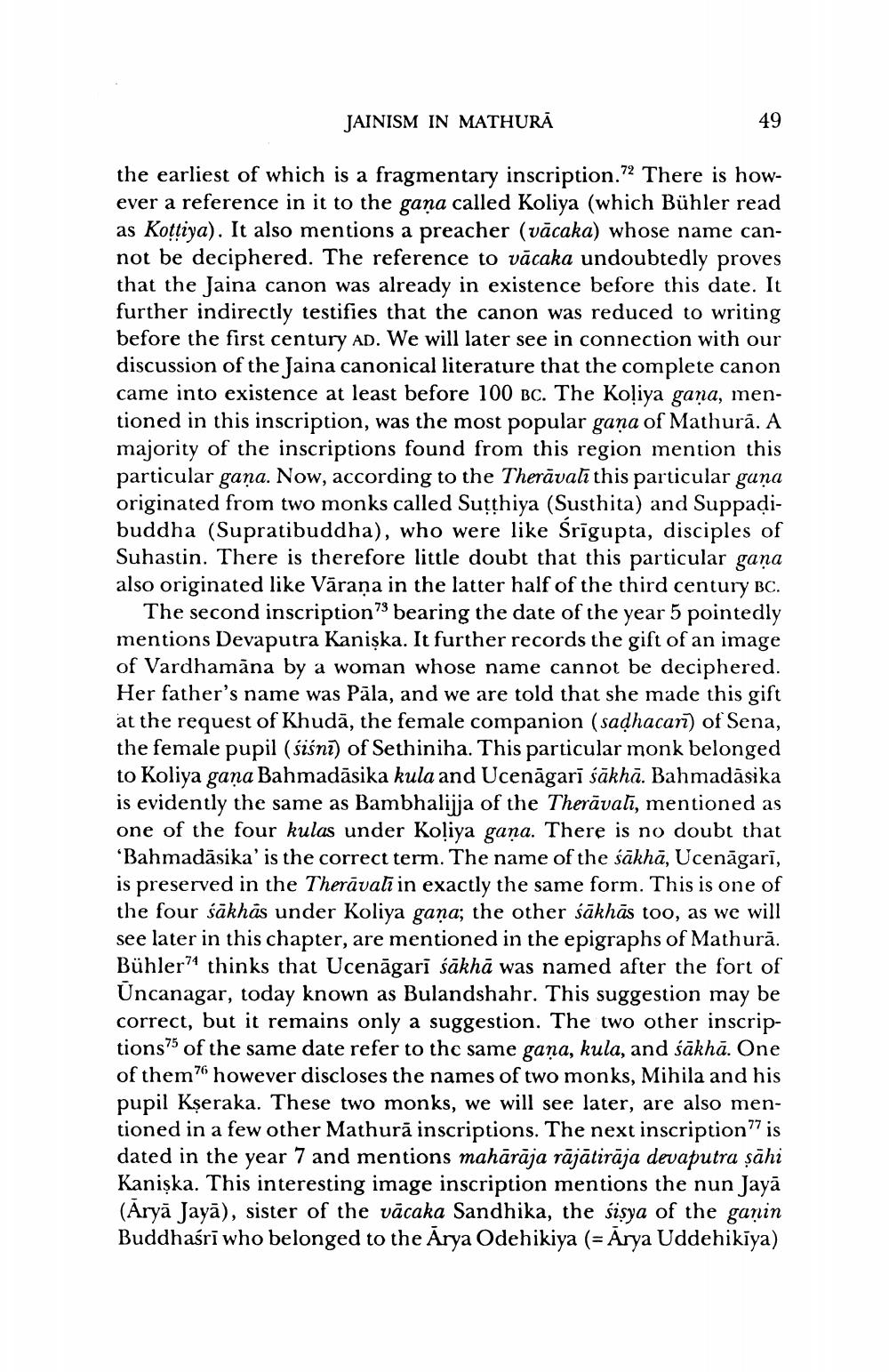________________
JAINISM IN MATHURA
49
the earliest of which is a fragmentary inscription.72 There is however a reference in it to the gana called Koliya (which Bühler read as Kottiya). It also mentions a preacher (vācaka) whose name cannot be deciphered. The reference to vācaka undoubtedly proves that the Jaina canon was already in existence before this date. It further indirectly testifies that the canon was reduced to writing before the first century AD. We will later see in connection with our discussion of the Jaina canonical literature that the complete canon came into existence at least before 100 BC. The Koliya gana, mentioned in this inscription, was the most popular gaña of Mathurā. A majority of the inscriptions found from this region mention this particular gana. Now, according to the Therāvalī this particular guņa originated from two monks called Sutthiya (Susthita) and Suppadibuddha (Supratibuddha), who were like Śrīgupta, disciples of Suhastin. There is therefore little doubt that this particular gana also originated like Vārana in the latter half of the third century BC.
The second inscription" bearing the date of the year 5 pointedly mentions Devaputra Kaniska. It further records the gift of an image of Vardhamana by a woman whose name cannot be deciphered. Her father's name was Pāla, and we are told that she made this gift at the request of Khudā, the female companion (sadhacan) of Sena, the female pupil (śiśnī) of Sethiniha. This particular monk belonged to Koliya gana Bahmadāsika kula and Ucenāgarī sākha. Bahmadāsika is evidently the same as Bambhalijja of the Therāvalī, mentioned as one of the four kulas under Koliya gana. There is no doubt that 'Bahmadāsika' is the correct term. The name of the sākhā, Ucenāgarī, is preserved in the Therāvali in exactly the same form. This is one of the four sākhas under Koliya gana; the other sākhās too, as we will see later in this chapter, are mentioned in the epigraphs of Mathura. Bühler74 thinks that Ucenāgari sākhā was named after the fort of Uncanagar, today known as Bulandshahr. This suggestion may be correct, but it remains only a suggestion. The two other inscriptions of the same date refer to the same gana, kula, and sākhā. One of them however discloses the names of two monks, Mihila and his pupil Kșeraka. These two monks, we will see later, are also mentioned in a few other Mathurā inscriptions. The next inscriptionis dated in the year 7 and mentions mahārāja rājātirāja devaputra şahi Kaniska. This interesting image inscription mentions the nun Jayā (Aryā Jayā), sister of the vācaka Sandhika, the sisya of the gamin Buddhaśrī who belonged to the Arya Odehikiya (= Arya Uddehikiya)




